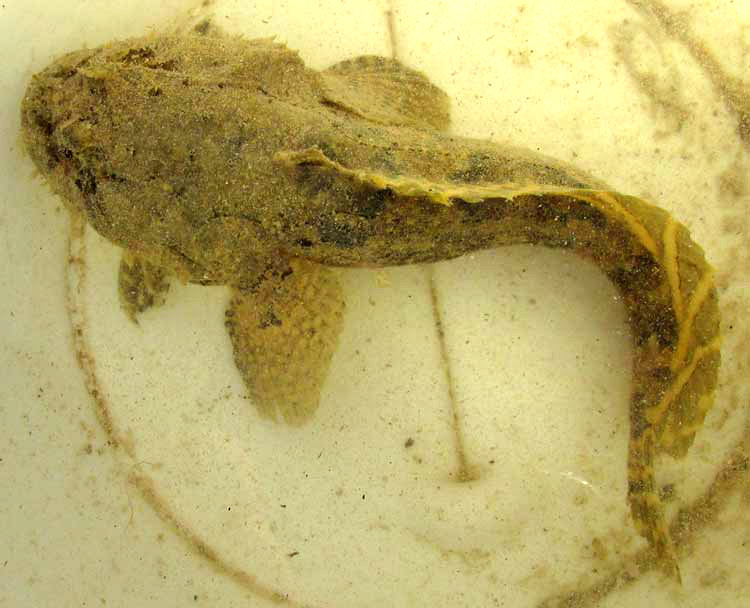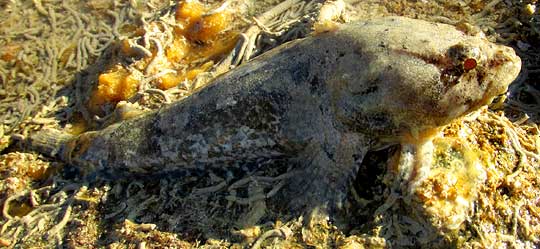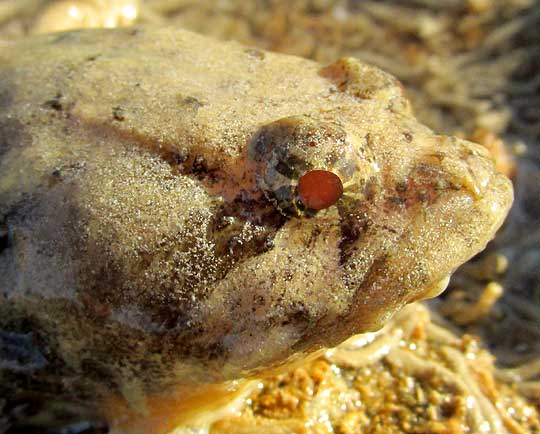Excerpts from Jim Conrad's
Naturalist Newsletter

from the March 8, 2015 Newsletter issued from Río Lagartos, on the Yucatan Peninsula's northern coast (~N21.60°, ~W88.16°), Yucatán state, MÉXICO
GULF TOADFISH
At low tide Rayo and I were wading ankle-deep in a Shoalgrass bed that normally lay too deep for such exploration. Spotting a funny looking fish nicely camouflaged atop the mud among Shoalgrass leaves, Rayo scooped the critter into the cut-off bottom of an old Purex jug. That's the three-inch-long (8cm) fish above.
It almost looks like a catfish, but note the long fin atop the body, the dorsal fin, which catfish don't have. Rayo said he'd met this species before, because one day his barefooted brother Jorge stepped on one, causing his foot and lower leg to swell and hurt for three or four days. Therefore, instead of taking the fish into his hand for a better view, unceremoniously he dumped it onto an alga-encrusted rock barely poking from the water. To our surprise, the fish quickly stood itself right-side-up, supporting its body with its side, or pelvic, fins, as if it had a mind to walk off with them. You can see this below:

In that picture you can see that something funny is going on with the eye. Before flipping the fish back into the water I got the close-up eye shot shown below:

It was hard to identify this fish, but it appears to be the rather common Spotted Scorpionfish, SCORPAENA PLUMIERI*.
*UPDATE: In 2024, images on this page are uploaded to iNaturalist, where user "coralreefdreams" recognized that this wasn't a scorpionfish, but rather a toadfish, genus Opsanus. Of the 5 Opsanus species possibly occur along the northern Yucatan's northern coast, Opsanus beta is by far the most frequently observed. After viewing many pictures of both species, the only consistently showing the general grainy grayness, lack of striking patterning, and with this form, OPSANUS BETA, the Gulf Toadfish, appears the best choice.
Gulf Toadfish occurs all along the Gulf of Mexico coast and on the Caribbean coast of the Yucatan Peninsula. They like shallow water. Often people say that Gulf Toadfish are toxic or venomous, but they're not, though other members of the Toadfish Family sometimes do.
And what of those eyes? Lots of people take close-up pictures of the eyes, but so far I can't find any explanation for their strange appearance. I wasn't using a flash and I didn't have the sun behind me.